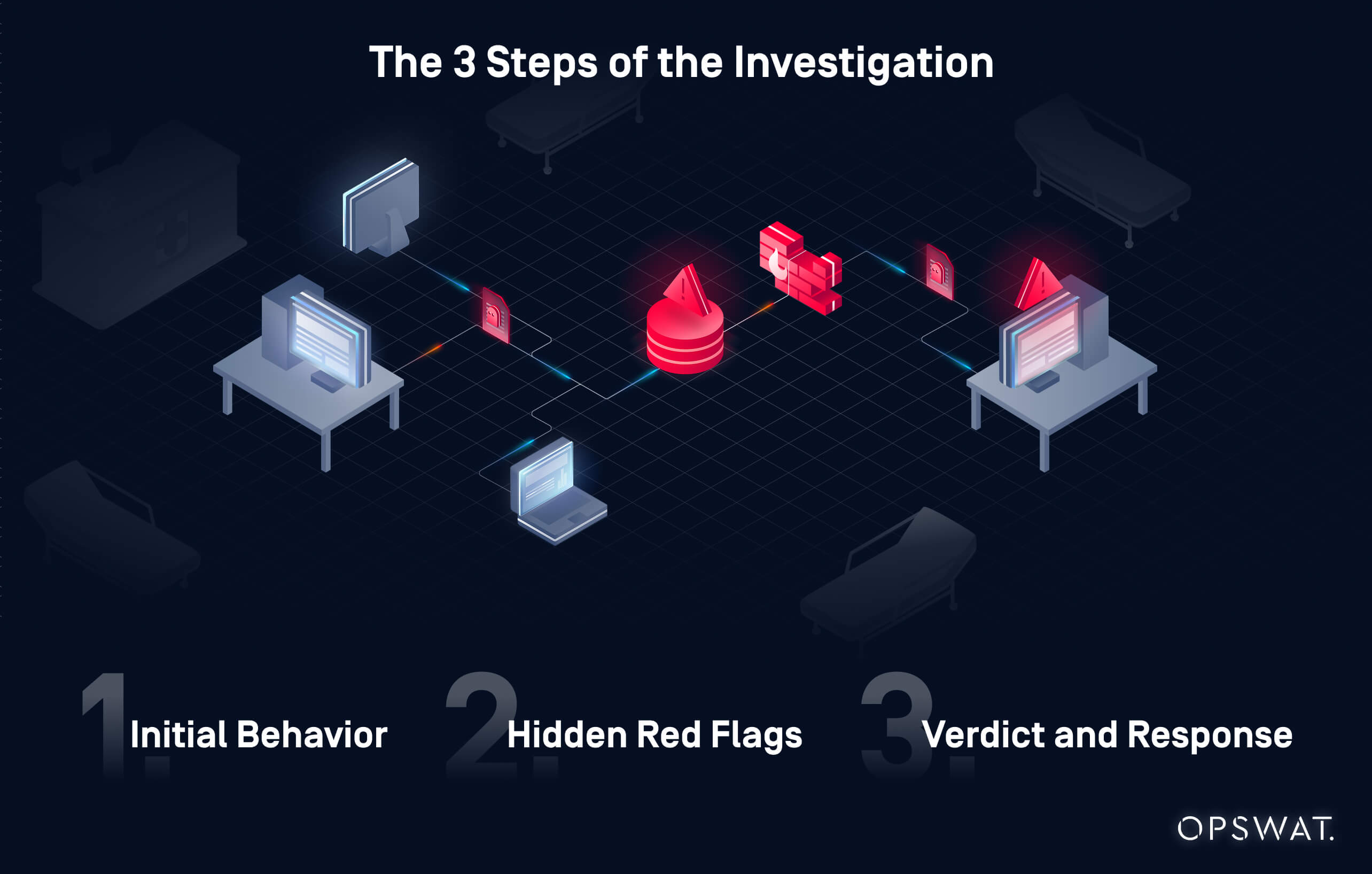Healthcare providers rely on nonstop file exchanges which often carry PHI (protected health information), Such files can range from test results and medical images to billing data or supplier reports, and their movement across partners and locations is vital for patient care. But they are also attractive targets for attackers. The HIPAA Journal reports that in 2024 alone, healthcare breaches exposed more than 237 million patient records, with incidents like the Change Healthcare attack affecting 190 million individuals. More recently, breaches at Episource and AMEOS showed how compromised files and partner connections can cascade across entire networks.
File Transfers as a Prime Attack Vector
For this European healthcare provider, thousands of daily transfers moved through aging SFTP and SMB shares with minimal inspection. Files were encrypted in transit but rarely scrutinized on entry, relying on a single antivirus scan that could not catch advanced or zero-day attacks. The result was a dangerous blind spot: sensitive patient data and operational systems could be exposed through even a single malicious file from a trusted partner.
Beyond external partner uploads, another key concern was the provider’s core Health Care Information System (HCIS). Large volumes of clinical and operational data had to be transferred daily to trading partners, yet these flows also lacked automation and security controls, leaving them vulnerable to the same risks.
Compliance requirements under HIPAA and GDPR added another layer of urgency: every undetected malicious file represented not only a security risk but also a potential regulatory failure. The result was an environment where file flows were assumed safe by default, but in reality, remained exposed to advanced cyberthreats. This gap exposed patient records, financial data, and critical operational systems to risk, underscoring the urgent need for deeper, file-level inspection.
Detecting the Undetectable
When MetaDefender Managed File Transfer™ (MFT) was introduced during a technical evaluation, the healthcare provider connected it to their existing SFTP and SMB folders. During the proof-of-concept process, MetaDefender MFT automatically launched a secure file transfer and inspection workflow on files stored from the past two weeks.
The unexpected happened when the system reached a file uploaded just the day before. Labeled “Accounting_Report_Q1.doc” and submitted by a trusted supplier, the file had already passed through the organization’s antivirus without raising alarms. Yet when the file was processed through MetaDefender MFT’s automated workflows and analyzed in the integrated Sandbox, its true malicious nature was revealed.
Alongside sandbox analysis, Metascan™ Multiscanning, which is an OPSWAT technology that combines over 30 anti-malware engines into a single powerful security layer, simultaneously cross-checked the file. It confirmed that there were no known signatures, which reinforced the verdict that this was a true zero-day malware.
The 3 Steps of the Investigation

1. Initial Behavior
The document appeared normal to the user, but its behavior told another story.
- Obfuscated JavaScript decoded shellcode directly in memory
- A suspicious process chain launched: winword.exe → cmd.exe → powershell.exe (Base64 command)
- The file attempted outbound HTTPS connections to an unusual IP
- It downloaded a second-stage payload (zz.ps1)
- It tried to enumerate system details and write to temporary directories
2. Hidden Red Flags
Traditional static scans missed all of this. With no macros, no known signatures, and nothing visibly malicious in the file structure, the threat would have remained invisible. MetaDefender Sandbox™ adaptive analysis, however, flagged clear red flags:
- DLL injection patterns
- Process hollowing
- Command & Control beaconing behavior
3. Verdict and Response
The verdict: a high-risk zero-day polyglot dropper.
MetaDefender MFT then automatically quarantined the file, blocked outbound traffic to the flagged IP, and generated a full sandbox report with IOCs (indicators of compromise). These IOCs were shared with the SOC (Security Operations Center) for further hunting, and policies were updated to isolate similar threats in future transfers.
Building a Stronger Defense
The discovery revealed that malicious files had been sitting unnoticed in shared folders for days, which was an unacceptable risk in an environment handling patient data. With MetaDefender MFT in place, every partner transfer was now subject to multilayer inspection:

MetaDefender Sandbox™
MetaDefender Sandbox™ uses the malware analysis pipeline to execute and observe suspicious files in real time, flagging zero-day malware that bypasses static defenses.

Metascan™ Multiscanning
Metascan™ Multiscanning uses 30+ engines to detect both known and emerging threats.

File-Based Vulnerability Assessment
Identifies flaws in installers, firmware, and packages before execution.

Prevenzione dei focolai
Continuously analyzes stored files and uses the latest threat intelligence database to detect and quarantine suspicious files before they spread.
At the same time, MetaDefender MFT centralized all file transfers under one policy-driven system. Every file, user action, and transfer job was logged, creating clear audit trails that now actively support HIPAA and GDPR compliance. RBAC (role-based access controls) and Supervisor Approval workflow limited who could interact with sensitive files, while secure policy-based automation reduced manual overhead.
Operational Impact and Lessons Learned
The zero-day alert served as a turning point. Legacy single-engine scanning was replaced with OPSWAT’s Multiscanning stack, sandbox inspection became mandatory for all third-party file transfers, and outbreak prevention was turned on by default. Security teams gained visibility into every exchange, compliance officers received auditable logs, and patient data was better protected across the ecosystem.
Most importantly, the organization learned a critical lesson: even well-meaning partners can deliver dangerous files without knowing it. By embedding sandboxing and deep file inspection directly into the transfer workflow, the provider moved from reactive security to proactive prevention.
Protecting Clinical Workflows Through Secure File Transfers
With MetaDefender MFT and Sandbox now forming the line of defense for file transfers, the healthcare provider is evaluating how to expand the same layered security model across additional workflows, including web uploads and cross-departmental data sharing. The goal is not just to keep pace with compliance, but to ensure that every file, no matter where it originates, is verified, clean, and safe before it enters the clinical environment.
The solution not only strengthened the security of file exchanges but also enabled the hospital to automate policy-based routing of secure file transfers, ensuring that sensitive data moves reliably and on time.
Unlike legacy tools that only protect the transfer channel, OPSWAT secures both the file and the flow. That difference proved decisive and is now central to the provider’s long-term cybersecurity strategy.
Protect your files before malicious content reaches your network. Connect with an OPSWAT expert today.





